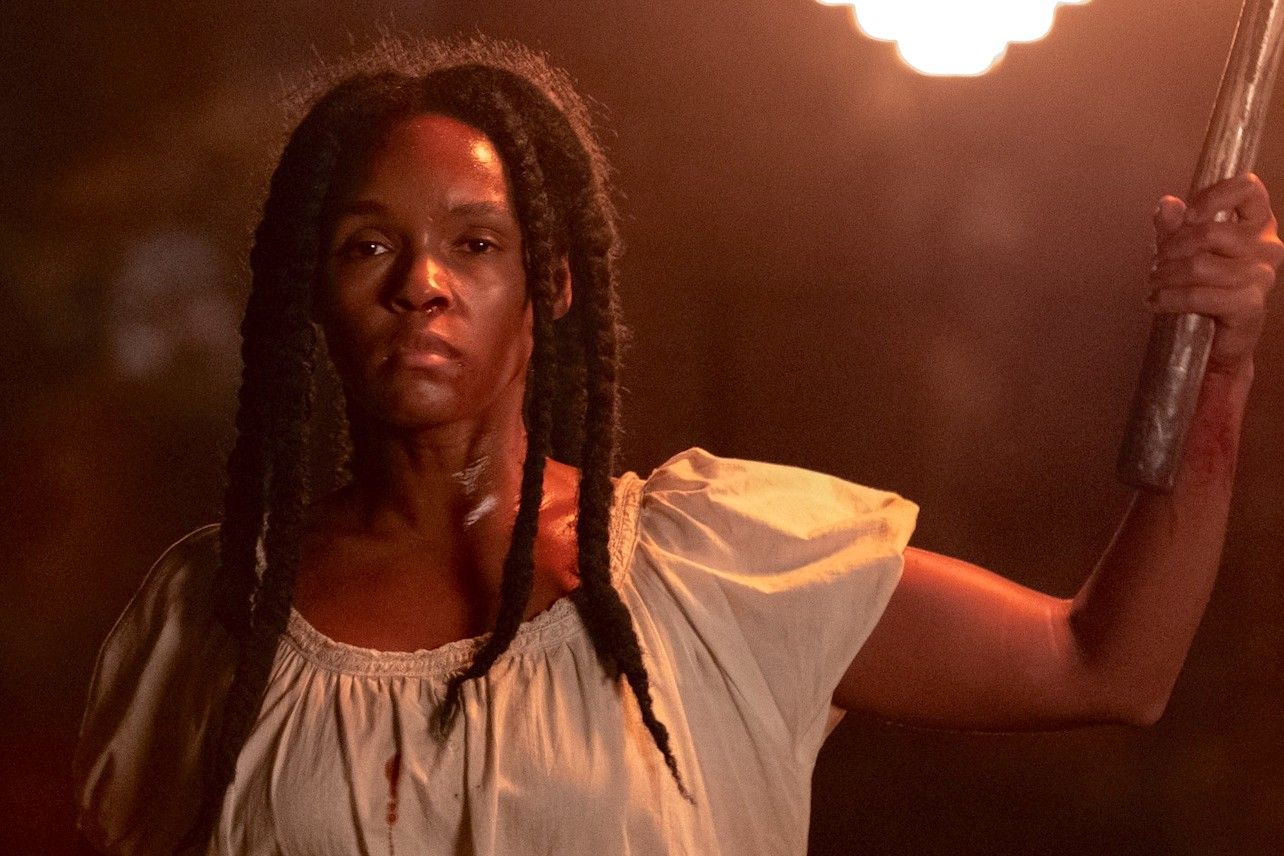Perfectly timed with the Black Lives Matter movement is Gerard Bush and Christopher Renz’s movie, ‘Antebellum’. The film perfectly portrays the plight of a slave trapped in a cotton plantation during the Civil Rights era. The film starring Janelle Monae, Gabourey Sidibe, Jena Malone, and Eric Lange walks us through a densely populated settlement of black slaves, strictly supervised by a group of white soldiers.
Antebellum: Plot Summary
We follow our protagonist Eden (Janelle Monae), a new slave, who faces appalling sexual abuse at the hands of a commanding general, who she refers as ‘Him’. Captain Jaspar (Jack Huston), the other soldiers and Elizabeth (Jena Malone), who is the mistress of the manor, torture Eden and the rest of the slaves mercilessly.
In the second half of the film, we watch Veronica, a dead-ringer for Eden, living a privileged life as a sociologist in present-day America. She is lives with her husband, child, and best friend who shower her with all the love and affection. Then something strange happens to her – an unnamed bouquet is sent to her as a woman in a centuries-old outfit observes her. Shortly after, Veronica unwillingly enters an Uber, whose driver is revealed to be the plantation owner Elizabeth. Out of the blue, Captain Jaspar emerges and knocks out Veronica cold.
What Is Veronica and Eden’s Real Identity?
Eden and Veronica are, in fact, the same person. The events take place in the 21st century. The slaves are actually black citizens who get kidnapped as the racist society partakes in their torture. In the opening sequence of ‘Antebellum’, we see the owners of the property christen the new recruits of the plantation with a different name. Elizabeth and her daughter likely selected the name ‘Eden’ for Veronica as soon as she set her foot on the plantation. They did so in order to establish their authority over the ‘slaves‘ and strip them their former free lives.
Veronica’s Escape In ‘Antebellum’
After yet another ‘slave’ takes her own life, Veronica and Eli, are forced to plot a plan in order to escape. The pair leave at night to get their hands on a cell phone, through which Veronica manages to place a quick call to her husband and give him her present location. The general, Veronica and Eli engage in a tussle shortly after the call. Eli is struck dead by the general, but Veronica manages to knock him out successfully.
Jaspar gets suspicious of Veronica and makes his way towards her with a weapon. She tricks him into entering the shed by claiming that the general is severely wounded and needs immediate help. He rushes in along with the Confederate soldiers, and accidentally reveals the true identity of Senator Blake Denton. Veronica then sets the shed on fire after she barricades them inside. We learn that Elizabeth is Denton’s daughter. She desperately starts searching for Veronica to kill her.

Image Source: Medium
Veronica manages to knock the Senator’s daughter out and rides off to the edge of the plantation as she walks past a billboard promoting it as a park. The billboard reads: “Antebellum’, Louisianna’s premiere Civil War reenactment park.” As she exits the confines of ‘Antebellum’, several confused tourists watch her. As the movie ends, we see Antebellum’s billboard being bulldozed.
Racism: The Past And The Present
At the very onset of the movie, we get a shot of a quote by William Faulkner, American writer and Nobel Prize laureate, taken from his novel ‘Requiem for a Nun’, reading, ‘The past is never dead. It’s not even the past.’ This quote perfectly sets the tone for the events that take place in ‘Antebellum’ and its social commentary on the racist nature of present-day America.
We realise that everything that Veronica and her fellow captives were subjected to took place in the everyday view of the general public. The catch here is that no one actually suspected that the story was occurring in the present time. The audience thought that it was merely a remnant of the horrifying past.
The makers of the ‘Antebellum’ intended this to be taken more allegorically than literally, by insinuating that racism is still deeply rooted in the present, and is not just merely a turbulent part of American history. And even though we can turn a blind eye to what happens around us, we still cannot negate its existence.








